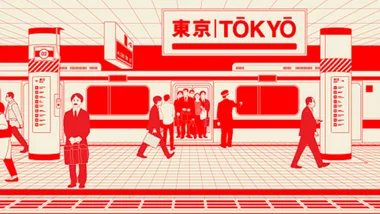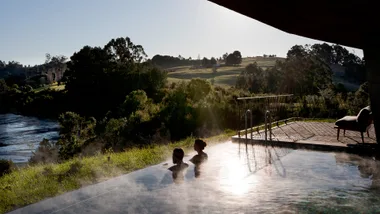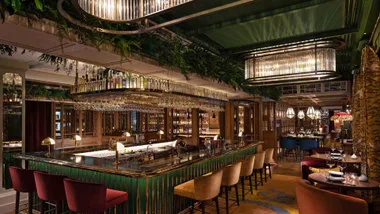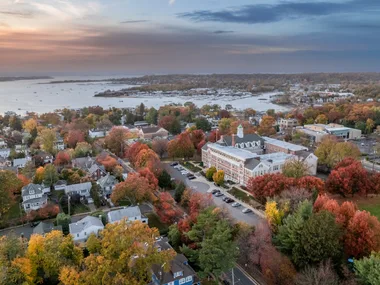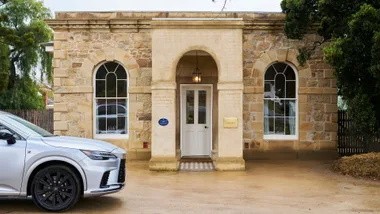THE FINE PRINT
GETTING THERE
Abercrombie & Kent offers a five-day/four-night Easter Island Extension as part of its Inspiring Journeys program. The package includes accommodation, meals and open bar at Posada de Mike Rapu, and explorations twice daily, and is priced from $3415 per person twin share, excluding flights. 1300 851 800
LAN flies from Sydney to Santiago daily, and offers onward flights from Santiago to Easter Island on Tuesday, Wednesday, Friday and Saturday. It also has two flights a week to Easter Island from Papeete. Commencing 5 January 2011, LAN will also offer flights from Lima to Easter Island every Wednesday and Sunday.
**STAY
**Explora’s Posada de Mike Rapu offers luxurious accommodation and amenities, guided excursions and stylish dining. Three nights from $2560 per person, all inclusive. +56 32 3952700
**SEE
**Museo Antropologico P. Sebastian Englert shows Polynesian migration and Rapanui culture and artifacts. +56 32 2551020
Mercado Artesanal is a market with modern expressions of traditional Rapanui craftsmanship.
Mike Rapu Diving Center offers dive excursions to the motu or offshore islands and to the underwater moai. +56 32 2551055
WHEN TO GO
The summer months (December-March) are regarded as the best to visit, and have a higher concentration of tourists. On either side of these months, the island is cooler, less touristy and less expensive. Winter rains can take some of the gloss off walking tours.
The lungs and ligaments can complain as much as they like. This, I tell them, is a journey for the soul. We’re trekking around the rim of Rano Kau, an extinct volcano that forms the south-western headland of Easter Island, or Rapa Nui as it remains to the indigenous population. The crater hums with a sort of spiritual feedback – a sense of sense – palpable throughout the World Heritage site of Rapa Nui National Park.
As chivalry isn’t yet dead – just not feeling too flash – I’m carrying the photographer’s tripod. It’s a sturdy model, built to last a lifetime, and I’ve got a nagging feeling that the lifetime might be mine. But then I take another glance into the spectacular crater lake, and my soul voices its appreciation, and my lungs and ligaments can go to hell.
Rano Kau is just one of dozens of distractions on Easter Island when you’re all moai-ed out. This is not an unusual sensation. Your first moai is compelling, absorbing and challenging. He’s awesome and intimidating and asks more questions than he answers. Answers are in short supply on Easter Island. There are nearly 900 moai on the island, in ones and twos and fours and sevens – up to 15 in a group. They may have represented gods and chiefs and kings, but the larger groups come to resemble reluctant participants in a police identification parade. And if they do have information about the collision of history and mystery in this place, they aren’t saying what happened. Their dumb insolence eventually gets to you. Trying to out-stare them just buries them further into your consciousness and then they begin to play tricks. Back in the minibus, Bill from Illinois has a more jutting forehead and deeper set eyes than I had noticed before. And back at the Explora lodge, fellow guests have transformed into a row of moai sitting at the bar.
It might just be that the moai of Easter Island look so serious because anyone who makes it to this place has to be pretty serious about getting here. When commercial jets signalled the rapid expansion of international travel, a favourite tourism tag line was “Be the first on your block to visit…”. Easter Island is about the only remaining place that could still use that line. It’s in the middle of the Pacific and it’s in the middle of nowhere. It is further from any inhabited place than any other inhabited place. While it’s a territory of Chile, the Chilean mainland is 3700km away. It’s part of Polynesia. The indigenous Polynesian population call the island Rapa Nui and themselves Rapanui.
Easter Island’s discovery was part of the great Polynesian migration that eventually settled a vast triangle of islands defined by New Zealand, Hawaii and Easter Island itself. The islands’ language, song and dance are all distinctively Polynesian, but what stands Rapa Nui apart are the massive stone monoliths regarded as among the wonders of the world.
Today, the moai are not just icons of an ancient culture that evolved in isolation, but icons of the island’s tourism marketing future. One no longer has to be as intrepid as Thor Heyerdahl, who drifted here by raft. There are flights four days a week from Santiago and two days a week from Papeete.
While its exclusivity is still a big attraction, Easter Island is ready for the new tourist drift to begin. Cultural tourism “software” (archaeological, cultural and scenic sites) and “hardware” (accommodation, transport and expert guiding) are in place. It’s time for sophisticated adventurers to log on.
Conspicuous in this market is adventure travel designer Abercrombie & Kent, which offers Easter Island as a five-day extension to the Chile experiences in its Inspiring Journeys portfolio. From Santiago, the flight to Easter Island takes about four and a half hours.
Accommodation is at Posada de Mike Rapu overlooking the Pacific Ocean in the vague direction of Peru. The lodge carries the name of local identity Mike Rapu who owns the land on which it stands. Only indigenous Rapanui people can own land on the island, and the lodge is managed by respected adventure travel operator Explora. The Explora enterprise is built on the belief that in a world where people have chosen to establish a culture of cities, remoteness has become a universal passion.
Its locations, settings, even the architecture of its lodges are intended to highlight the mystery of the destination without attempting to solve it. Explora’s other properties are in the alpine desert and oasis region of Atacama in northern Chile, and the dramatic Torres del Paine National Park in Patagonia. Look for one soon in a wilderness near you.
Posada de Mike Rapu neatly fits the Explora accommodation template of refinement over luxury, and the spirit of adventure over all else. This translates to imaginative but minimalist design, stylish and generous presentation, and total respect for the spirit of the location. Architect José Cruz Ovalle won an international award for his low, sleek design, which uses natural textures and materials to reinforce its organic appeal. Public areas are thoughtful, attractive and inspiring; menus created by executive chef Laurent Pasqualetto cleverly balance flair and finesse.
As excellent as the property is, however, the destination remains the hero, and Explora excels in its program of excursions and in the knowledge and personality of its indigenous Rapanui guides. Each day, guests can choose from at least five guided excursions in parties of no more than eight.
Although it covers little more than 160 square kilometres, Easter Island contains a staggering 26,000 archaeological sites. The moai – the highest 20 metres tall; the majority never even erected – are the major attraction, but there is plenty of tourist appeal too in scenic sites, wild and sheltered beaches and contemporary expressions of Rapanui culture.
Community interaction centres on the island’s only town, Hanga Roa, a village of small service businesses, eating houses, a fresh produce market, a museum and craft shops shyly peeping out from under palm fronds. The biggest gathering each week is Sunday’s church service – one of those “singspiration” events to which Polynesians so cheerfully respond. The music is so infectious, the spirit of fellowship so genuine and uplifting, that this brand of devotion should be transported everywhere. Perhaps the most convincing evidence of its broad appeal is the lengthy line of skateboards stacked against the church steps.
Today, around 4400 people live on the island – about 60 per cent of indigenous Rapanui extraction, the balance of mixed and minority races. Rapa Nui was annexed by Chile in 1888 at which time the population, estimated to have peaked at between 10,000 and 20,000, had been reduced to fewer than 150 people by tribal wars, slave raids and epidemics, and by famine and illness brought about by the destruction of the island’s ecosystem. The first Christian missionary, Frenchman Eugène Eyraud, demonstrated the mysterious ways in which God works by bringing tuberculosis to the island in 1867, a disease which wiped out a quarter of the island’s population. No wonder they call their island Rapa Nui rather than name it after a Christian festival.
The main reason for the ecosystem collapsing was that the islanders felled every tree for scaffolding, rolling logs, hoists and levers for their blessed moai. The island became a desert and the Rapanui were unable to grow food. Without wood for canoes, they couldn’t fish. Starvation led to tribal wars and cannibalism. The Rapanui believed that the power of each tribe resided in its moai. And so they systematically destroyed the moai in tribal fighting.
Even an inkling of this history prepares the visitor for a barren, windswept, godforsaken place, but not so. Groves of trees have been re-established in the occasional gullies and groves that crease the landscape like a rumpled bedsheet, and Aussie-friendly eucalypts positively “oi-oi-oi” at you as you pass. The southern coast of the island is rugged, rocky and dramatic, its sharp relief often pixilated by mists of spray created as big seas come into contact with their first immovable object since Antarctica.
The beginning being a good place to begin, we start our exploration of the island at Rano Raraku quarry where all the moai were carved. Its hillside is littered with the corpses of hundreds of moai – some unfinished when the carvers finally laid down their tools, others that broke during carving or while being slid down the slopes on completion. Some face down, some lie on their backs as if resting and watching the clouds scud by.
At Tongariki, a bay near the quarry, 15 moai representing different time frames and different levels of status have been re-erected on an ahu or stone platform, but without much of the mystery of the originals. Archaeologist Claudius Cristino was able to convince a Japanese construction crane company of the promotional benefits of hoisting them into place.
Other important moai sites are Ahu Akivi, Ahu Ature Huki and Ahu Nau Nau. At Ahu Akivi, seven moai face towards the sea and the setting sun. All other moai on the island face inland. It is believed they represent the seven explorers sent by King Hotu Matu’a to discover the island, according to Rapanui legend. Ahu Ature Huki is located at beautiful Anakena Beach and was the first group of statues to be re-erected; the process began during Thor Heyerdahl’s 1956 expedition. Ahu Nau Nau, also at Anakena Beach, was restored by Rapa Nui archaeologist Sergio Rapu in the late 1970s and boasts seven well-conserved moai showing carved details thought to be body tattoos.
Despite the island’s compact dimensions, there is no sameness about it. There are stretches of rocky coastline that could belong to the NSW south coast, empty grasslands reminiscent of the North Yorkshire moors, sheltered sandy beaches that have surely washed up from Tahiti. There’s the cheerful laid-back informality of the Polynesian population, but everywhere – okay, nearly everywhere – there lurks an awareness that something deep and dark happened here, and even a sense of another world, another time.
On a walk along the coast between Mahatua and Anakena, I encounter a very old woman resting on the side of the track. She asks my Rapanui guide not where I’m from, but for the place of my birth. It is relayed back to her that I was born in New Zealand and there’s no response. The guide corrects herself. “Aotearoa,” she says. The old woman smiles and reaches out her arms. “Kia ora,” she says warmly.
And so to Rano Kau. The constantly changing nature of the island’s scenery does nothing to prepare you for the awe-inspiring crater of Rano Kau. This is the site of the Orongo ceremonial village where 53 houses and other buildings burrowed into the headland have been restored and where one of the world’s highest concentrations of petroglyphs has been conserved. But even the mystery and history of Easter Island’s archaeological wonders can’t match the sheer grandeur of nature here.
The crater measures 1.5km across, and deep inside is a lake intricately patterned and coloured with floating clumps of plants, reeds and grasses. An outer slope of Rano Kau plunges down into the ocean and its cluster of three small barren islands: Motu Nui, Motu Iti and Motu Kau Kau. No need to scan the horizon. The nearest landfall is the Pitcairn Islands – 2075km to the west. There’s nothing much to do but ponder the Explora maxim that remote has become a universal passion, and to recall that old saying that inside all of us there is a place – remote and islanded – that houses endless regret or secret happiness. A place like Easter Island.
 sharyn cairns
sharyn cairns
